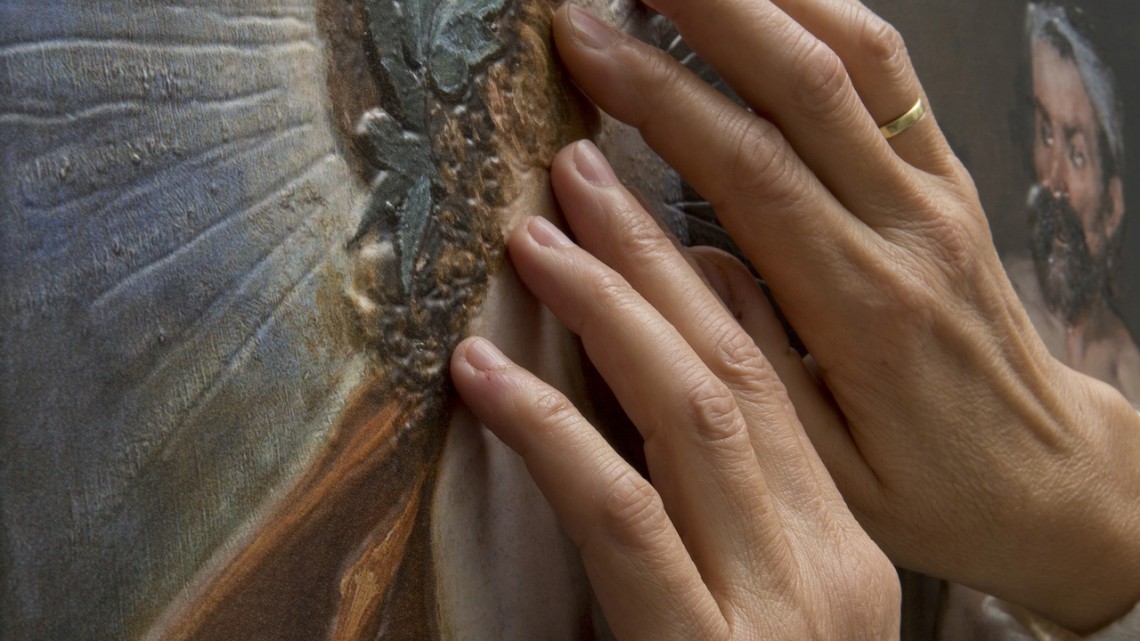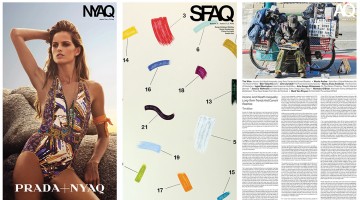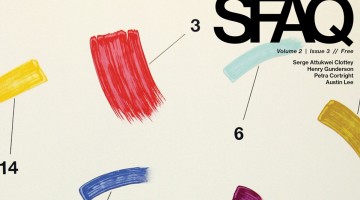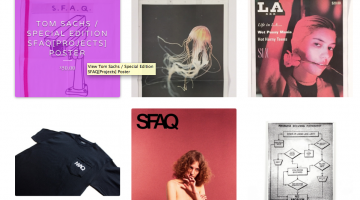For Presidents Day, SFAQ writer and “famous art professor” Mark Van Proyen took an in-depth look at 20th century rulers and their forays into painting. The luminaries include George W. Bush, Winston Churchill, Dwight D. Eisenhower, and Vladimir Putin. Memorably, Van Proyen ruminates with Freudian wit about the closeted gay origins of Putin’s veiled window painting that went for a million bucks.
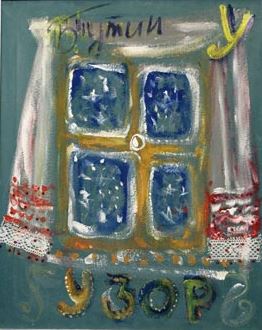
“The window here is a signifier of an unresolved conflict with a maternal figure…” – M.V.P. Vladimir Putin, Oil on Canvas, 2009
The Wall Street Journal has reported that the Beverly Hills-based United Talent Agency has vowed to represent and support visual artists. UTA Fine Arts will manage the careers of select high profile artists in a time when art is considered increasingly popular and is expanding for the 1% of artists and their patrons at rates never seen before. What does this mean for the art world and the majority of working visual artists today? Probably nothing. What does it mean for the Jeff Koonses of the world? Perhaps that they look even more superficial. Only time will tell, that is, if history even matters anymore.
The article “Qatar and the Art-Killing Effects of Capitalism” in the Globe and Mail, though perhaps too dry and “newsy,” gets straight to the underlining effect of capitalism on art making, and touches upon the odd colonialism-in-reverse of the Gauguin painting that is now the world’s most expensive. The article rightfully points out the inflationary policies of the world’s number one buyer, Qatar, but noticeably omits all of the other barbaric things Qatar spends its money on.
This lengthy New York Times piece exposes the selling practices of photographer Peter Lik, who, like Thomas Kinkade, sells his very banal artworks in his own boutiques around the country to a dedicated audience, but is perplexed as to why he is not taken seriously by the fine art world, especially since he has sold “the world’s most expensive photograph.”
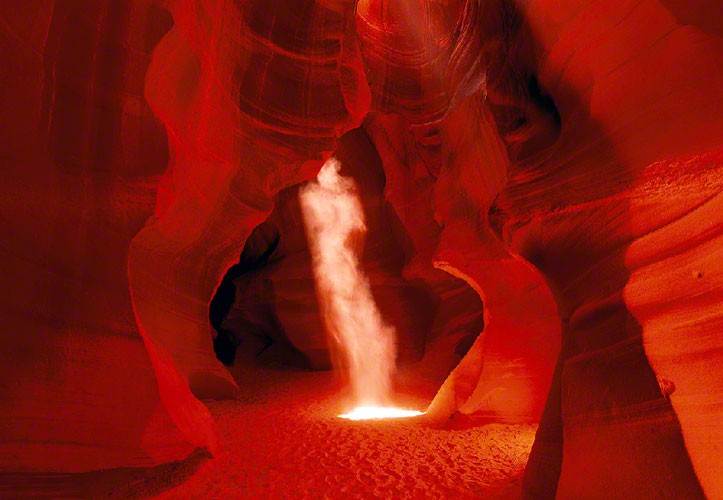
The worlds most expensive, crappy, photograph. Beloved by Texan sporting good-store managers alike.
In his op-ed for the Observer “The Art World’s Biggest Lie,” collector Adam Lindemann raises objections over the idea of art being an investment, referencing Larry Gagosian who told him that “art is an investment, but that doesn’t make it a good investment.” Lindemann offers a skeptical view of the recent “biblical swarm of locusts” of “art advisors” (many of whom are or used to be curators) and points to the blatant observation that the new art buyers of the Asian and Middle Eastern economies know or seem to care little about about art.
This article from the Los Angeles Review of Books examines complicity and complex engagement between Nazi Germany and many artists under Hitler. It also offers revealing insight into the sometimes unhealthy alliance between artists and power.
Artnet gives a rundown on the various assassination attempts over the years on Lars Vilks, the cartoonist responsible for the 2007 cartoon depiction in a Swedish newspaper of the prophet Muhammad as a dog. He was present during the February 14th Copenhagen Café shootings.
The Prado has made a sizable selection of its most well known masterpieces into touchable versions for the blind, begging the question: can visual art be seen through the other senses?
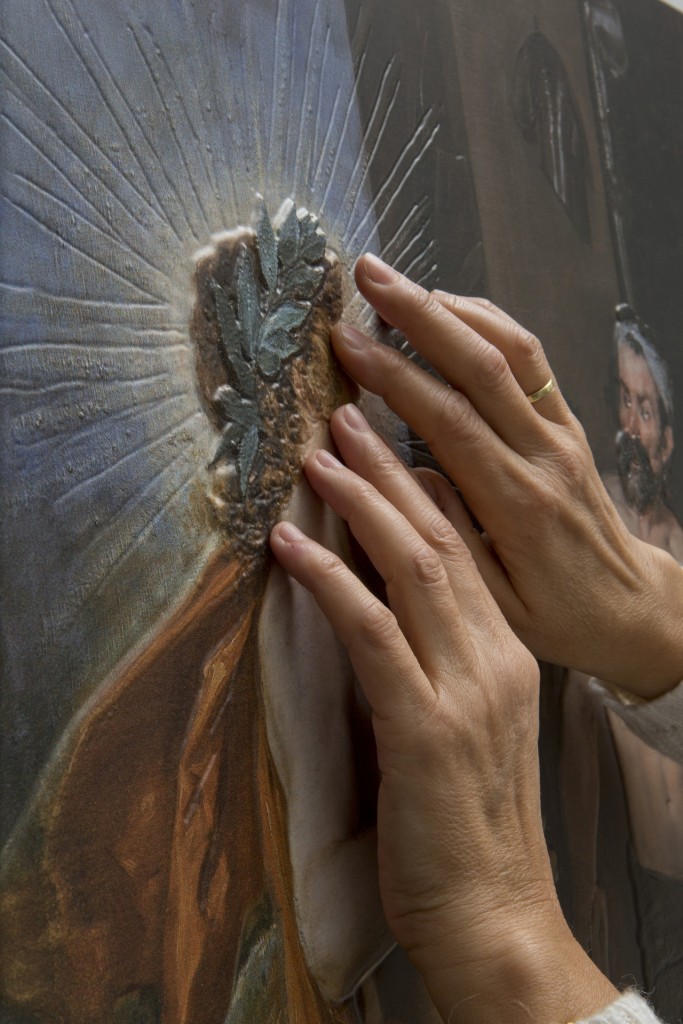
The new touchable version of Velázquez’s “The Triumph of Bacchus” (1628–29)
In Istanbul, Turkey, local shopkeepers attacked an art show over allegations of public affection in the city’s Tophane district.
Though not necessarily news as such, this review of a show in Ljubljana has the potential to speak about larger issues of net neutrality. The exhibition The Censored Internet features the flags of the countries deemed by a UN report as “enemies of the internet” including, yes, the Red, White, and Blue.
Finally, this must-read essay in the Guardian explicates a little-known fact that impressionism was largely made and re-made by a French art dealer living abroad in England, Paul Durand-Ruel, who brought the likes of Monet and other famous impressionists.
